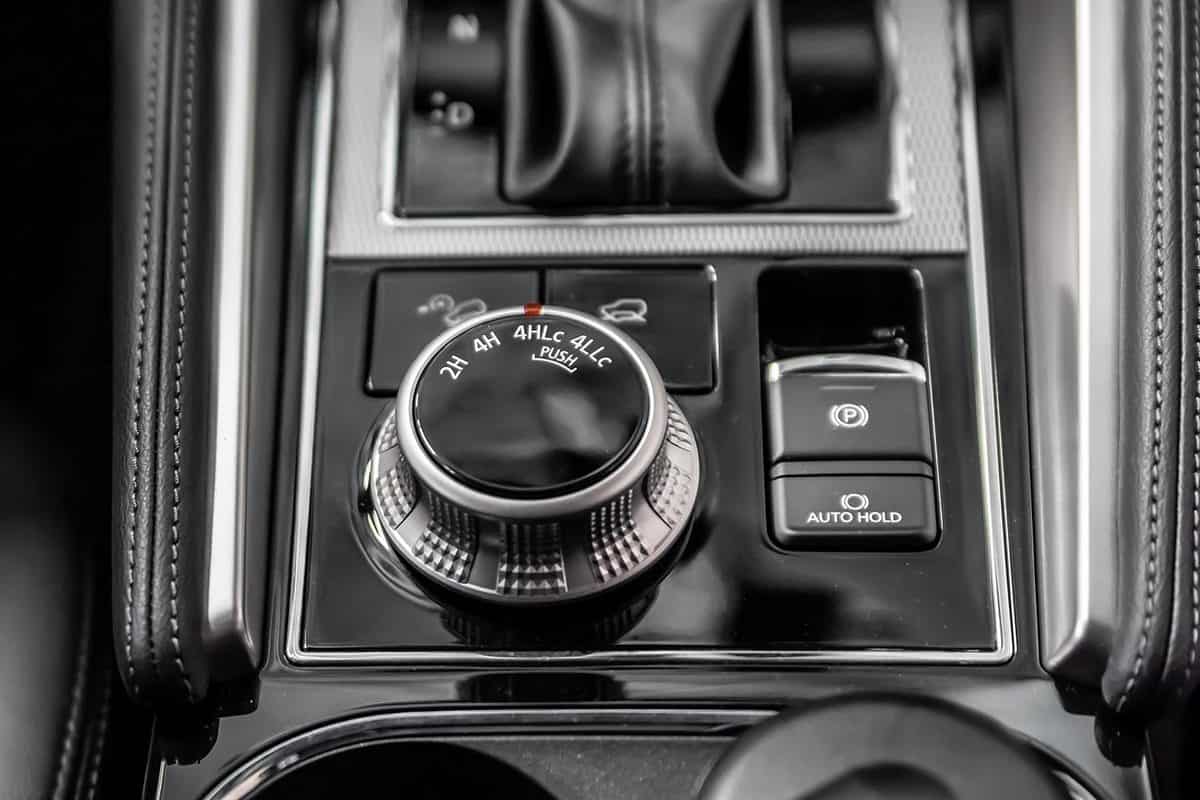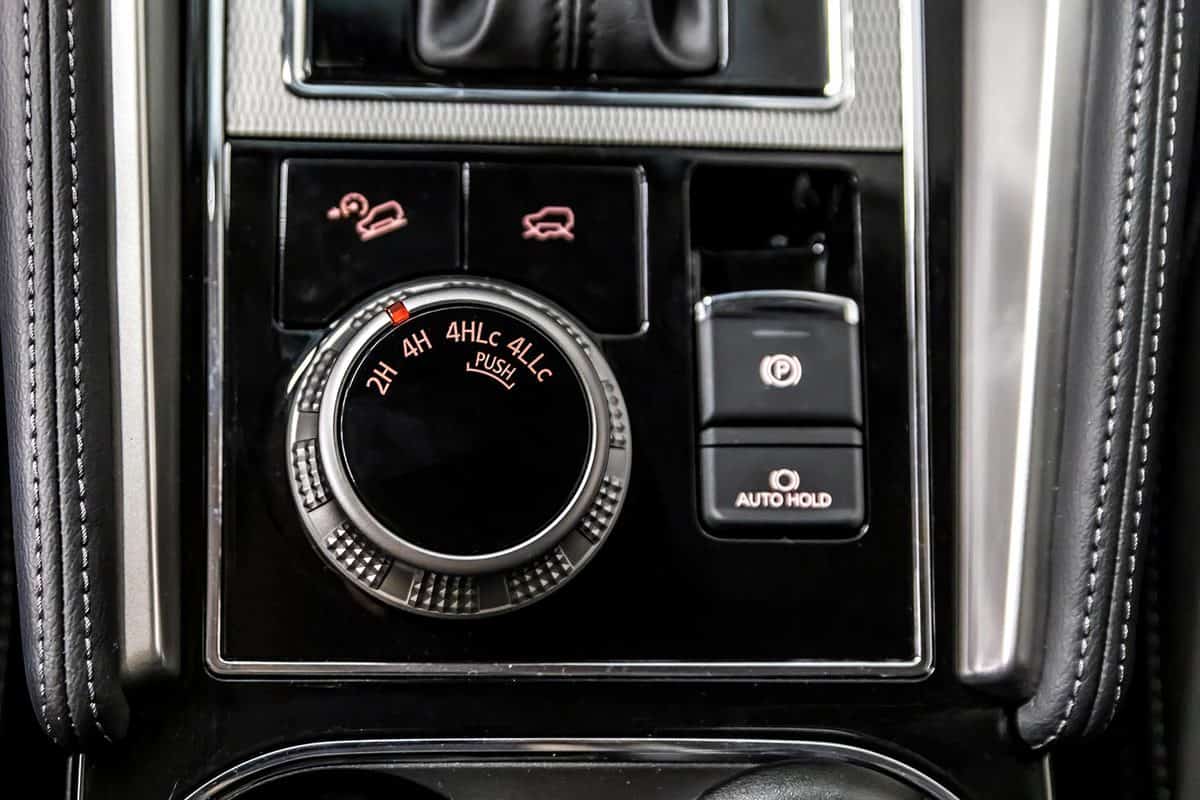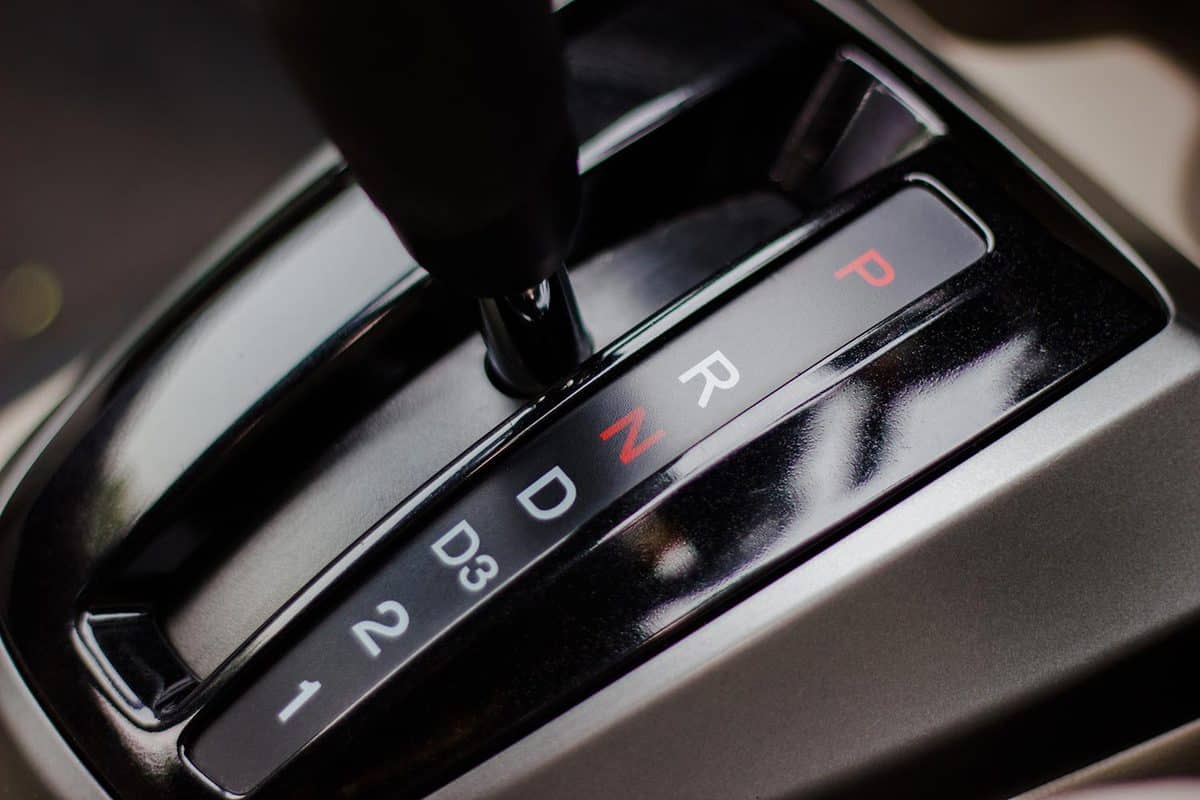The Suburban is Chevy's ultimate full-size SUV. It is spacious and powerful, but does it come with a four-wheel-drive drivetrain? And if so, how do you use it? We've investigated these questions thoroughly and have just what you need to know.
The Chevy Suburban is available with either a two-wheel-drive [2WD] or four-wheel-drive [4WD] drivetrain. Those with 4WD can be activated by using the transfer case knob near the steering wheel.
There's more to it than that, though. In this article, we'll look at how to find out which drivetrain your Suburban has. We'll also see the different modes, how to shift into them, and when to use them. Read on to get the whole story.
![A chevrolet Suburban SUV trucks on display, How to Engage 4 Wheel Drive Chevy Suburban [Do All Suburbans Have It?]](https://vehq.com/wp-content/uploads/2022/01/How-to-Engage-4-Wheel-Drive-Chevy-Suburban-Do-All-Suburbans-Have-It-683x1024.png)
Does Chevy Suburban Have 4 Wheel Drive?
While many Chevy Suburbans have 4WD, not all do. If you want to engage 4WD, you must first make sure that your Suburban has it.
If you are unsure whether your Suburban is equipped with 4WD, look for a transfer case knob near the steering wheel. This knob will show five settings for the most recent model years [2-High, Auto, 4-High, 4-Low, and Neutral]. Earlier model years will have the same, minus the Auto setting.
How to switch to 4WD

Now that you know if your Suburban has 4WD let's cover how to engage it. The process for engaging 4WD will depend on which available settings you want to use.
2-High, Auto, and 4-High Mode
You will want to be in the 2-High mode for most of your driving. When you want to switch into Auto or 4-High mode, you can turn the knob to the desired mode. The light will flash briefly and then go solid when the transfer is complete.
You can transfer back to the 2-High mode in the same manner. These switches can be made at any speed. You can also shift with the accelerator pressed, but you may find it shifts more quickly and smoothly by releasing the accelerator.
4-Low Mode
Switching in and out of the 4-Low setting is trickier than Auto and 4-High. To engage the Suburban's 4-Low mode, your vehicle must be moving slower than 3 mph, and the transmission must be in N [neutral].
Note that this neutral is not the one selected with the transfer case knob but rather the neutral you enter with the transmission shift lever.
With the transmission in N and the vehicle moving less than 3 mph, turn the transfer case knob to the 4-Low position. As with other modes, the light will blink for a few seconds, then go solid when the transfer is complete.
After the transfer into 4-Low is complete, you can use the shift lever to put your vehicle back in D [drive] or R [reverse]. You should not drive faster than 45 mph in the 4-Low mode.
Neutral
While the other modes appear on the transfer case knob in white, neutral appears as a blacked-out N. It also requires a different process to engage than any of the other modes.
To engage neutral on the transfer case, park your vehicle on a level surface. Engage your Suburban's parking brake, then shift from P [park] to N [neutral] with the transmission shift lever.
Next, turn the transfer case knob to neutral and hold it there. After 10 seconds, the N should turn red. When you release the knob, it will spring back to the 4-Low position, but the N should stay red.
You cannot drive your vehicle with the transfer case in neutral. This mode should only be used when towing your Suburban.
You can learn more about each of these modes and how to use them by checking your owner's manual.
Do You Have to Be in Neutral to Switch to 4WD?
You do not need your transmission in neutral to shift between 2-High, Auto, and 4-High modes in the Suburban. You can shift freely between these modes while driving normally.
However, you need to shift your transmission to neutral when switching in and out of the 4-Low mode.
How do you manually disengage 4WD?
You can disengage 4WD through the same process you engage it. That means you can shift back to 2-High from Auto or 4-High by simply turning the knob.
This also means that to switch from 4-Low to any other modes, you need to set your transmission to neutral and have your vehicle moving slowly, less than 3 mph.
When to Use the Suburban's 4WD Modes

We've seen that Suburbans equipped with 4WD offer several different modes. But what are the Suburban's 4WD modes, and when should you use them? We'll look at each in detail.
2-High
You'll likely do the majority of your driving in the 2-High mode. This is the Suburban's two-wheel-drive system, specifically a rear-wheel drive. This means that the power from the engine goes to the rear axle and does not engage the front axle.
Because of this, 2-High gets the best fuel economy of all the modes. When driving in normal conditions on paved roads, 2-High is what you'll want to use.
Auto
A recent addition to the Suburban's transfer case, the Auto mode works similarly to all-wheel drive in other vehicles. Most of the power from the engine is sent to the rear axle, but more power is sent to the front axle as well when the system detects a loss of traction.
This is good to use when driving on a paved road, but the conditions vary. You will receive extra traction when you need it, but it won't reduce your gas mileage as much as 4-High.
4-High

The 4-High mode engages both the front and rear axle. It provides consistent extra traction and can be used on paved roads when conditions are snowy or icy. It can also be used for light off-roading or plowing snow.
4-High will reduce your fuel economy and increase the wear on your tires compared to Auto and 2-High. If used in normal road conditions, you may feel more vibration in your steering system and find the vehicle noisier.
4-Low
Like 4-High, 4-Low engages the front axle, but it also increases your vehicle's torque.
This mode is not meant for driving on paved roads. Rather, it can help your vehicle when off-roading in challenging terrains, such as deep sand, mud, and snow. It can also help with climbing and descending steep slopes safely.
4-Low will greatly reduce your fuel economy and should not be used in normal driving conditions. You should not exceed 45 mph with 4-Low engaged.
Neutral

While the previous modes we've seen change the drivetrain setup, neutral disconnects the drivetrain from the engine. Neutral on the transfer case should not be confused with the neutral selected with the transmission shift lever.
This neutral mode is only used when dinghy or dolly towing your Suburban. If you are planning on towing your Suburban, you'll also need to know how much it weighs. Check out our article, "How Heavy is a Chevy Suburban?" for more information.
Should you use 4WD for towing?
Whether 2WD or 4WD is better for towing is a contentious issue in the towing community. In general, the Suburban's 2-High setting should work perfectly for towing and will save you on gas money compared to the 4WD settings.
If, however, you are towing close to your maximum towing capacity, you may find that you sometimes lose traction when accelerating from a stop. In that case, you may find that the Auto setting is useful for getting the extra traction when you need it.
You can learn more about towing with your Suburban by checking out our article, "Can a Chevy Suburban Tow a Travel Trailer?" You'll also see some great travel trailers just the right size for your Suburban.
Final Thoughts
Four-wheel drive is an excellent feature to make sure that your vehicle is ready for the elements, whatever the road throws at you. Having it isn't enough, though. It's also essential to know how to use it.
In this article, we've seen how to determine if your Chevy Suburban is equipped with a four-wheel-drive drivetrain, how the different transfer case modes work, and how to shift in and out of them. With this knowledge, you'll be ready to make the most of your drive and your Suburban.
